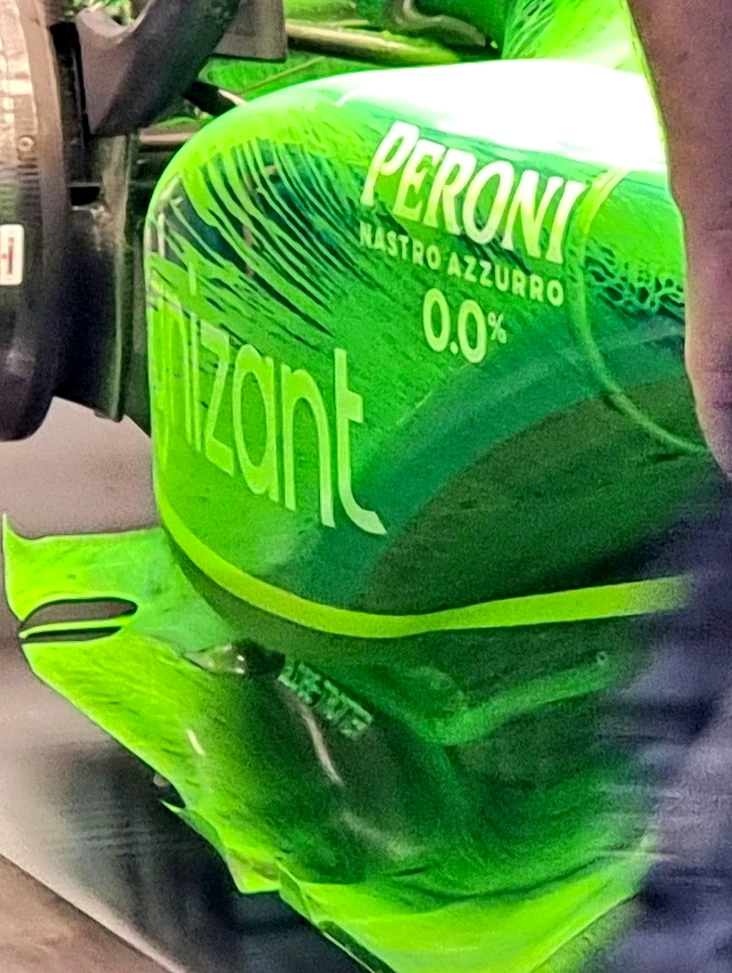
Aston Martin still not pleased: big aero upgrades in Montreal
With 6 podiums in the first 8 races, Aston Martin can be considered the quickest team so far in 2023. Also helped by the bold performances of Fernando Alonso, the Silverstone team has always capitalized - perhaps with the exception of the Spanish Grand Prix - the potential made available by the AMR23.
How the ATR is helping Aston Martin's aerodynamic development
Since we are talking about the same team that finished last season in seventh position in the Constructors' Championship, by virtue of the "Aerodynamic Testing Restriction" (or ATR, in short) it benefits from a far superior number of hours available in the wind tunnel and for CFD tests than its current competitors, namely Ferrari and Mercedes.
Assuming that a baseline figure for the hours allowance is 100%, the teams mentioned have these values available until 30 June 2023:
| Team | Disponibilità ore di test |
| Red Bull | 63% |
| Ferrari | 75% |
| Mercedes | 80% |
| Aston Martin | 100% |
In any case, if you would like to delve into the details of this regulatory aspect, we talked about it some time ago in this article.
The aerodynamic updates brought to Montreal
Aston Martin has therefore arrived in Canada with an array of aerodynamic evolutions that we can define as absolutely not secondary. Precisely for this reason, it becomes even more valuable that the first free practice sessions were not used to make comparisons between the old and the new specs, but the two AMR23s were directly equipped with the new spare parts - which then were promoted for the whole weekend, concluded with Fernando Alonso's second place behind Max Verstappen.
Glenn Dunbar / Motorsport Images
This says a lot about the trust that the team had in this aero package, but above all on the simulation tools they are equipped with at the factory... As we know, the introduction of new parts that give a different response on the track than expected is an indication of poor correlation: this usually leadsto a halt of the development program until the simulation models are recalibrated.
This was evidently not the case for Aston Martin, and that's positive news for the rest of their championship. But let's get straight to the point, and let'sanalyze the updates brought to Canada.
New sidepods with increased undercut and narrowed top channels
The most visible change undoubtedly concerns the shape of the sidepods, which do not represent a revolution of the old concept but an evolution of it.
The Aston Martin update at the #CanadianGP is quite extensive and seems to have taken the same route as Red Bull did with the evolution from the RB18 to the RB19. pic.twitter.com/16d4Rvmj3P
— nicolas carpentiers (@NicolasF1i) June 19, 2023
In side view, the sidepods now feature a descending trend, but even more accentuated than in previous Grands Prix. This is also visible by observing the AMR23 from above, where the deep "tunnels" that distinguish the 2023 project can be seen.

Photo: Albert Fabrega (Twitter)
This very view, in addition to highlighting the presence of the "step" at the entrance to the tunnels, allows us to see how the tunnels themselves are now narrower in section and converge towards the centerline of the car as they develop in length.
The reason for this aerodynamic choice, in the writer's opinion, lies in the attempt to collect the airflow coming from the front axle and direct it to an area of the diffuser which is less affected by the turbulent wake of the tyres (the so-called "tyre squirt"). If this were the case - and I want to clarify that without the data in the possession of Aston Martin we cannot take it for granted - it would be possible to bring the airflow towards the upper wall of the diffuser, which maximizes the pressure differential compared to what lies below the wall itself. This phenomenon increases the so-called extraction of the diffuser, and with it the aerodynamic downforce produced.
Zak Mauger / Motorsport Images
But there is also another plausible theory regarding the presence of the two tunnels on top of the sidepods: they could in fact act as a "container" of the airflow which cannot be ingested by the inlets of the sidepods themselves, and which is therefore forced - outside design conditions - to be rejected outside these inlets. The rejected volume of air determines a very turbulent and not very useful flow, so the presence of a geometry that redirects it and gives it a new utility is something aerodynamically pleasing.

Photo: Albert Fabrega (Twitter)
Furthermore, as can be seen in the image above, the new shape of the sidepods leaves more space available to the airflow coming from the front end of the car: we are talking about the so-called "undercut", whose function - like the tunnels mentioned - is to feed the upper wall of the diffuser as much as possible.
In the same picture it can also be observed (thanks to the use of Flow Viz, that highlights the trend of the airflow) that there are no significant flow separations, both on the sidepods and on the side edges of the floor.
The floor has revised side edges: a Red Bull-inspired solution
Speaking of the side edges of the floor, here too there are some innovations, most likely inspired by the Red Bull RB19 which is dominating this World Championship.
Patrick Vinet / Motorsport Images
Two wavy profiles and the following concave upward portiontry to prevent air at atmospheric pressure from infiltrating inside the edges of the floor, a phenomenon which would compromise the ability of the entire vehicle to generate aerodynamic downforce. In this area, more than in others, it is difficult to provide more details of the functioning of the entire floor: the lack of pictures of the underfloor doesn't allow us to evaluate this area as a whole, leaving us doubts about the aerodynamic goodness of some choices...
Engine cover: the fin is lengthened and cut, with a new cooling outlet
Finally, let's close this technical analysis with perhaps the least relevant novelty among those visible, but nonetheless an indication of the all-round work carried out by the engineers of the Silverstone team.
Patrick Vinet / Motorsport Images
The fin that closes the engine cover in its upper part (the one that begins with the airbox, to be clear) now has an elongated and cut shape: under it you can see an additional outlet for hot air, perhaps not very necessary in the Canadian race but which will certainly be useful in the events that will mark a hot summer of Formula 1.
What benefits did the upgrades allow?
The Aston Martin AMR23 that Fernando Alonso had in his hands for the Canadian Grand Prix seemed to be a single-seater capable of enjoying a higher top speed than usual, a sign that the updates probably had the effect of reducing the overall aerodynamic drag. An aspect that was detrimental in the first few races, but which, if corrected, could "unlock" new setups and increase performance indirectly as well as directly.
Already the next GP in Austria could give us some answers in this regard.
Index
Aston Martin still not pleased: big aero upgrades in Montreal